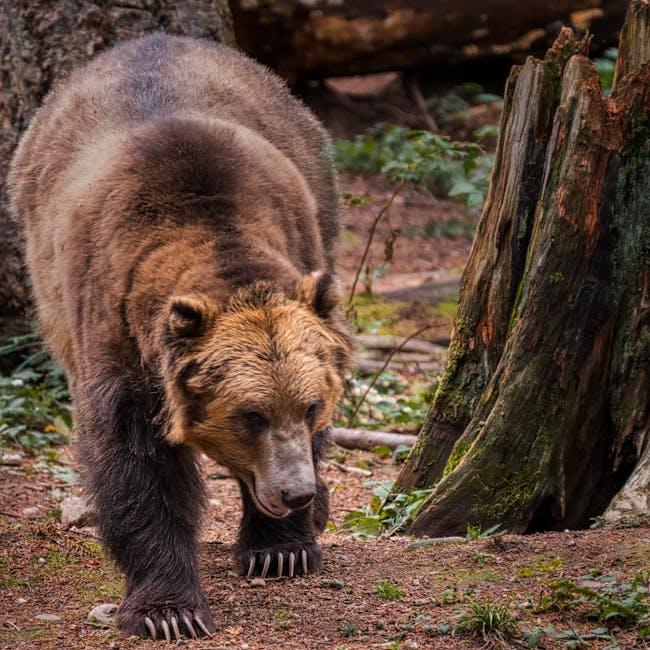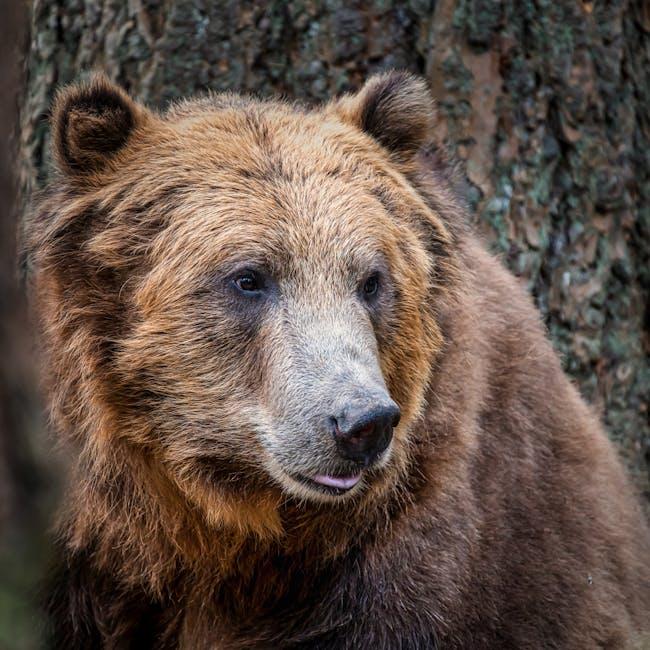
An Alaskan Brown Bear’s New Shiny Smile: Huge Metal Crown for Canine Tooth
By ABC News – Breaking News, Latest News and Videos
Introduction: When Wildlife Meets Modern Dentistry
In an unusual but heartwarming intersection of wildlife care and modern dental technology, an Alaskan brown bear recently received a huge metal crown for one of its canine teeth. This remarkable procedure, covered by ABC News, has led to the bear flashing a shiny new smile — a symbol of the growing focus on wildlife health and rehabilitation. But how did this remarkable dental feat happen, and why is it important?
Background: The Story Behind the Bear’s Dental Dilemma
Alaskan brown bears, known for their strength and agility, rely heavily on their teeth for foraging, hunting, and self-defense. However, just like humans, bears can suffer from dental issues such as tooth fractures or decay. This particular bear, observed by wildlife experts in Alaska, was found to have a damaged canine tooth, complicating its ability to thrive in the wild.
In response, wildlife veterinarians decided to step in and perform a dental restoration procedure — the first of its kind for a wild Alaskan bear — by fitting a custom-designed metal crown to its large canine tooth.
The Procedure: Crafting and Installing the Metal Crown
The dental team followed an innovative treatment protocol tailored for wildlife, combining veterinary expertise and prosthodontics.
- Assessment: The bear was captured safely for examination under sedation, allowing a full inspection of its damaged tooth.
- Preparation: The damaged canine was cleaned and prepped to receive the crown, ensuring it would fit securely.
- Fabrication: A huge metal crown, specially crafted to withstand the bear’s powerful bite forces, was designed and cast by a dental lab.
- Installation: The metal crown was permanently cemented onto the bear’s canine tooth, restoring both function and protection.
Why a Metal Crown?
The choice of a metal crown was strategic. Metal crowns are durable, resistant to wear and tear, and can handle substantial biting forces — essential characteristics for a bear’s active lifestyle. This ensures the animal can continue its natural behaviors without further dental damage.
Benefits of the Dental Crown for the Alaskan Brown Bear
Restoring the bear’s tooth was not just about aesthetics; it had several practical advantages for the animal’s health and survival:
- Improved chewing ability: The crown protects the tooth and helps the bear chew meat, fish, and vegetation effectively.
- Pain relief: Fixing the damaged tooth helped eliminate discomfort that could have affected feeding habits.
- Preventing infection: Covering the damaged canine reduces the risk of bacterial infections that could lead to more severe health problems.
- Long-term survival: Maintaining dental health supports the bear’s overall wellbeing, vital for thriving in the wild.
Case Study: What This Means for Wildlife Rehabilitation
The successful dental crown installation on an Alaskan brown bear has broader implications for wildlife conservation.
Experts see this as a pioneering case demonstrating how:
- Advanced veterinary dentistry can be adapted for wild animals.
- Wildlife health interventions can significantly improve the quality of life for injured or aging animals.
- Dental health monitoring should become an essential part of wildlife rehabilitation and research.
This case is inspiring further research and attention to animal dentition as part of holistic wildlife care programs.
First-hand Experience: Wildlife Vet’s Perspective
Dr. Susan Harper, the lead veterinarian involved in the procedure, shared insights:
“Fitting a metal crown to a wild bear’s tooth was an extraordinary challenge. But seeing the bear regain full use of its tooth and smile once again is incredibly rewarding. It’s a small but vital step towards improved animal welfare in the wild.”
Practical Tips: How Wildlife Dental Care Can Be Supported
While not everyone can perform veterinary dental procedures on wild bears, there are ways to support this growing field:
- Support conservation organizations that invest in veterinary research and animal rehabilitation.
- Raise awareness about the importance of dental health in animals through social media and community outreach.
- Encourage funding for wildlife hospitals and mobile veterinary clinics specialized in dental care.
- Volunteer for programs assisting injured wildlife, including those providing medical or dental treatments.
Quick Facts About Alaskan Brown Bears and Their Teeth
| Fact | Details |
|---|---|
| Average weight | 600 to 1,200 pounds (varies by age and gender) |
| Canine length | Up to 2.5 inches long |
| Primary diet | Omnivorous — fish, berries, small mammals |
| Dental formula | 3/3 incisors, 1/1 canines, 4/4 premolars, 2/3 molars |
| Common dental issues | Fractures, wear, infections |
Conclusion: A Symbol of Progress in Wildlife Care
The story of the Alaskan brown bear and its newly crowned canine tooth is more than just an unusual news item — it symbolizes progress in wildlife rehabilitation and a deepening understanding of animal health needs. By harnessing modern dental care techniques, veterinarians are opening new avenues to enhance the lives of wildlife, helping them survive and thrive in their natural habitats.
Next time you hear about an animal “smiling” with a shiny new metal crown, you’ll know it’s not just a cosmetic upgrade, but a beacon of hope for the wellbeing of Alaska’s wild brown bears and beyond.


